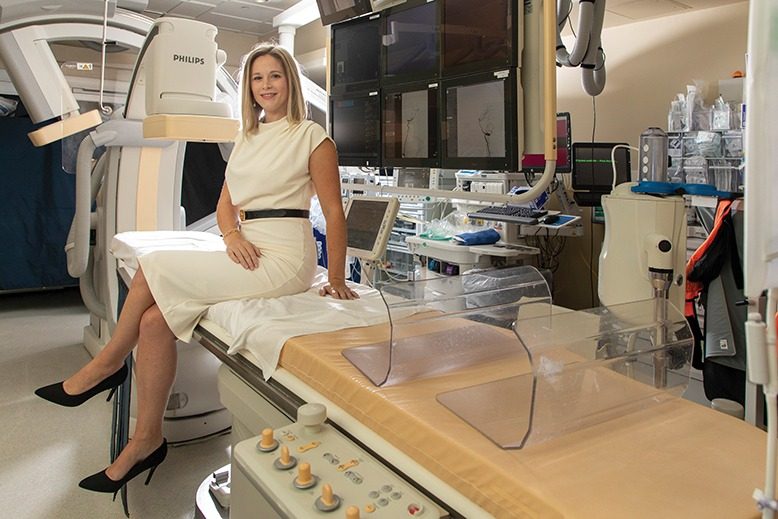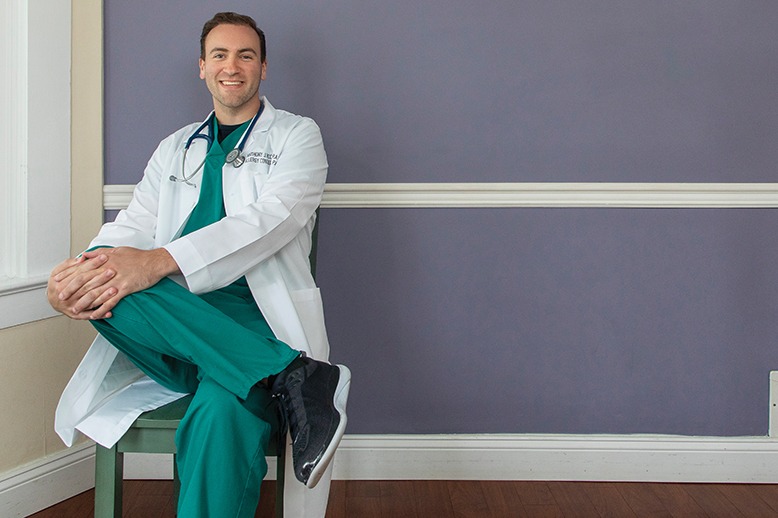How Physician Assistants ‘Extend the Reach’ of Doctors – New Jersey Monthly

Dhaval Patel never set out to be a physician assistant. Patel was a pharmacy major at Rutgers University and a volunteer emergency medical technician when he first encountered PAs in hospital emergency rooms.
Similarly, Danielle Francis started her career in health care as a file clerk in a South Jersey medical office. She later became a receptionist, surgical coordinator and medical assistant before becoming a certified physician assistant in 2009.
Today, Patel and Francis are among approximately 3,337 PAs practicing in New Jersey.
“Every ER in New Jersey has a PA,” says Patel, who became a PA in 2010 and now oversees operations related to PAs and nurse practitioners within the Emergency and Hospital Medicine group of RWJBarnabas Health, based in West Orange.
PAs often practice in emergency rooms, explains Patel, because their education allows them to treat a wide range of conditions. Often, PAs tend to patients with non-life-threatening conditions to free up physicians for critical-care patients. “But PAs are everywhere,” he adds.
Indeed, PAs can be found in surgery and surgical subspecialties, including orthopedics and plastic surgery, says Matthew McQuillan, a PA and program director/interim chair of the department of Physician Assistant Studies and Practice at Rutgers. “Primary care, which includes urgent care, family medicine, internal medicine and outpatient services, also has a lot of PAs,” he says.
PAs also work in pediatrics, obstetrics and gynecology, dermatology, addiction medicine and more. “The baseline foundation of education allows skills to be built in different specialties as you become experienced,” says McQuillan.

Although some patients prefer to be seen by doctors, Anthony J. Piccolo, a physician assistant in Verona, says PAs are “changing opinions, one patient at a time.” Photo by Scott Jones
Like physicians, PAs are educated in the medical model. “We approach patients from the same perspective,” says Bethann Mercanti, a PA and president of the New Jersey State Society of Physician Assistants, the state’s chapter of the American Academy of Physician Assistants.
However, PA education and training time is much shorter. Whereas prospective physicians attend medical school for four years, future PAs go through a two-year master’s degree-level program. “It’s an intense curriculum,” says Mercanti, adding that many of the classes are the same as classes for medical students. “It’s probably one of the most difficult master’s degrees available today.”
Even before entering a master’s program, candidates must spend 50 to 100 hours shadowing a PA before they are considered. “We make sure this is the right decision for them,” says Mercanti. Candidates also have experience working on a medical team as an EMT or registered nurse.
PAs also are required to have 2,000 hours of hands-on training before they can graduate and must pass a national certification exam. To maintain their license, PAs must complete 100 hours of continuing medical education every two years and take a recertification exam every 10 years.
The profession has expanded in scope and numbers since 1992, when New Jersey became the second to last state to license them, says McQuillan, noting that U.S. News & World Report ranked physician assistant as best all-around job in 2021. (The magazine reported a median salary of $112,260 for PAs nationwide.)
In New Jersey, PAs are regulated by the same board of medical examiners that oversees physicians, but they are not medical doctors. “[Doctors] are trained to be fully independent practitioners,” says Mercanti. “We are trained to be team-based practitioners with a great deal of autonomy.”
***
In New Jersey, PAs can perform a range of procedures, including injections, casts, joint aspirations, line insertions, lumbar punctures and gynecological exams. They can deliver babies and perform cesarean sections.
“As PAs, we help extend the reach of the doctors,” says Anthony J. Piccolo, a PA who practices with Dr. David Fost, an allergist/immunologist in Verona. (Piccolo also worked with David’s father, Dr. Arthur Fost, a longtime New Jersey Monthly Top Doctor, before his death earlier this year.)
“We work under supervising physicians,” says Piccolo, “and we essentially work under their license and scope of practice.”
The duties of each PA can also be modified by their supervising physician. “That supervision could be very direct, meaning in the room with you, but often, they are delegating to you what they are comfortable with you doing autonomously,” says McQuillan.
In some cases, that means ordering tests, providing treatment, and writing prescriptions without conferring with the supervising physician. “They can do a complete patient encounter on their own, depending on the specialty,” says McQuillan.
PAs perform some of the same functions as nurse practitioners, but the latter are trained in the nursing model. Sheena Bhatt, a PA who works in cardiac surgery and critical care at Morristown Medical Center in Morristown, says that both play an important parts in providing care.
***
The PA profession was created in response to a shortage of primary-care physicians in rural areas. Dr. Eugene A. Stead Jr., a professor at Duke University, started training former military corpsmen to fill the gap. The first class of PAs graduated Duke’s program in 1967.
McQuillan adds that today’s PAs aren’t necessarily going into specialties where there’s a doctor shortage, but they are creating more access to care. “In some cases, it is easier to get an appointment with a PA,” says McQuillan. “Having more providers in an office opens up access.”
“When any physician’s practice has grown to the point where they need help and want to service their patients better, a PA is a tremendous asset,” says Dr. John B. Catalano, an orthopedic surgeon at Premier Orthopaedics Associates of Southern New Jersey in Vineland. He and his partners have a team of five PAs who help them in the office and the operating room.
“It definitely increases the quality of care,” says Danielle K. Francis, who has worked closely with Catalano for 12 years. Their working relationship, he says, is like a well-oiled machine. “With two brains, four eyes and four hands working together, nothing falls through the cracks,” says Catalano. Their offices are across the hall from one another. Before office hours, they review their schedules together, and at lunch, they catch up on the progress of the day.
This collaborative spirit attracts many PAs to the profession. “We are a part of the health care team, and everyone’s goal is to help people and make them feel better,” says Piccolo. Job satisfaction, he says, is high among physician assistants. “A lot of it has to do with the flexibility,” says Piccolo. Unlike physicians, PAs can change specialties relatively easily. “When you are a PA, you have options,” he says. That’s why, he adds, it’s unusual for PAs to become physicians.
Essex County resident Jessica Horowitz says she and her children have had positive experiences with PAs. Horowitz, who suffered a recent brain aneurysm, found the PA at her neurosurgeon’s office particularly helpful. “I’ve seen her three times after surgery,” she says. The PA removed the staples from her head. “She took them out while we were talking,” says Horowitz. The PA also scheduled her clearance scan and was always available to answer phone calls and texts.
“If your doctors are amazing, the PA is going to reflect that,” says Horowitz. The same things you would ask a doctor, she says, you can ask a PA.
Still, some patients may prefer to be seen by physicians. Piccolo is not deterred. “You help them out and get them better and start changing opinions, one patient at a time,” he says.
Amanda Staab is a frequent contributor. She does not like the sight of blood.
